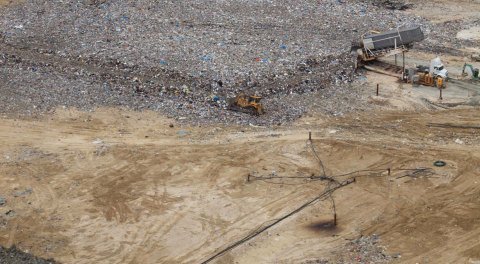Home | About CCW | Contact Us | Climate change Meaning | Causes | Solutions | Emissions | Carbon trading
Direct action on climate change
Direct action is the ‘new’ climate change policy that conservative Australian government elected in September 2013 claims is “a lasting and stable alternative” to the carbon pricing policy of their predecessors — the policy known to most people as the carbon tax.
There are two key features of the new policy:
- an ‘Emissions Reduction Fund’ that will pay companies and farmers to reduce emissions with the cheapest option for emission reductions chosen from the lowest bidder [a so-called ‘reverse auction’]
- a baseline of emissions set for each major polluter based on what the polluter has emitted in the past with a penalty for those who go over this amount
The idea is that individual businesses will not go over their historical emission levels and the government will buy emission abatement [emission reduction and/or carbon sequestration] from project offering the lowest price per tCO2e.
Some $1.55 billion has been allocated to buy this abatement in the first 3 years.
In short, put a hold on emission growth and buy some abatement to get to the 2020 target.
Emission reduction commitments
Both sides of politics accept the 2020 target of 431 million tCO2e. They disagree on how to get there.
And it is quite a journey given that emissions in Australia for the year to June 2013 were 571 million tCO2e.
If we assume that the penalty [whatever that might be] works and all polluters stick to their historical emission, then by 2020 the government will need to find or fund 140 million tCO2e of biosequestration and/or emission reduction.
That is 140 million tCO2e each and every year thereafter assuming emissions remain at 571 million tCO2e.
This is a challenging prospect given that estimates of abatement from the Carbon Farming Initiative in 2020 are between 5 and 15 million tCO2e. This is the scheme that covers activities from growing trees to capturing methane from landfills.
Even if the capacity existed $550 million per year in the Emission Reduction Fund would mean buying at around $4 tCO2e. This is well below the cost of delivering abatement for most emission reduction activities.
garbage being piled into a large landfill in NSW — the pipes in the foreground are capturing methane produced from the decomposing garbage in the layers below — methane capture is likely to be cost effective for reverse auctions given the infrastructure already exists at most large landfills in Australia
Ace up the sleeve
So far it direct action does not look good until the ace is played.
Along with many other developed countries, Australia has some carbon credits up its sleeve. There are 121 million tCO2e of surplus carry-over emission rights from the first Kyoto commitment period that ran from 2008 to 2012.
This ‘hot air’ is handy.
Use the carry-over in 2020 and only 19 million tCO2e has to be found to meet the commitment and achieve the target. Reverse auctions at $29 would be a good deal for some abatement activities.
Now it is clear why there is no real political urgency in any climate change policy — the politicians made sure that the targets were never going to be that onerous.
Direct action update
There has been much debate as to what exactly direct action, the Australian Government’s alternative to a cap-and-trade mechanism to encourage greenhouse gas emissions reduction.
Recently a former NSW Department of Primary Industries staffer referring to the option for farmers in Australia to sequester carbon into soil and vegetation suggested that it is "preposterous to assume...that you can store enough carbon to mitigate climate change."
Except that soil carbon was to be one of the Governments key sinks and a major plank of the strategy.
And we now have a myCFI website to help farmers understand their options for carbon offset projects except that the crops and soils page delivers “no result”.
The former staffer added that storing carbon in forests is possible but "the opportunity cost of lost agricultural land...means that it's never going to happen."
Oops.
Here are some related pages from climate change wisdom...
Back to top of direct action | Return to solutions | Return to climate change wisdom home page
Recent Articles
-
Reducing emissions while looking for solutions...
Nov 01, 15 04:46 PM
I've seen a lot of post's online for ideas on reducing emissions. The one suggestion I have not seen, is the most obvious. There should be a government -
Climate change evidence
Mar 24, 15 06:22 AM
Real climate change evidence has to demonstrate a change in climate. An extra sunny day or a severe storm or a flood is not enough. -
The climate change effect
Feb 19, 15 03:08 AM
What will be the climate change effect? There isn't one, there are many. Perhaps too many for us to understand.


New! Comments
Have your say about what you just read! Leave me a comment in the box below.